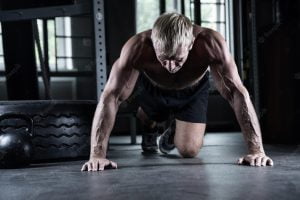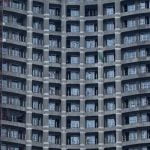

Although varicose veins are a common issue that can affect everyone, bodybuilders may find them more problematic. Managing your varicose veins is crucial if you want to gain muscle mass and enhance your appearance. Four pointers for bodybuilders with varicose veins are as follows:
1. Refrain from overtraining. Excessive training can strain your veins, making them more noticeable and vulnerable to rupturing. To avoid overtraining, be sure to balance your training program.
2. -onsume a balanced diet. Maintaining the health of your veins and lowering your chance of ever getting varicose veins start with eating a balanced diet. Incorporate nutritious grains, low-fat proteins, and an abundance of fruits and vegetables.
3. Raise the pressure in your blood vessels. Try to control your blood pressure if you have it by eating a balanced diet and getting regular exercise. Raising your blood pressure can help lower your initial riskVaricose veins: What Are They?pment.
4. Make routine checkups. It’s crucial to schedule routine examinations for varicose veins with a physician or vascular expert, just in case.
Contents
- 1 How do varicose veins occur?
- 2 Varicose vein causes
- 3 How can varicose veins be prevented or treated?
- 4 How can bodybuilders lower their chance of getting varicose veins?
- 5 How do varicose veins occur?
- 6 Causes of varicose veins
- 7 Methods for eliminating varicose veins
- 8 How to treat varicose veins
- 9 How do varicose veins occur?
- 10 The causes of varicose veins
- 11 Ways to avoid having varicose veins
- 12 How varicose veins are treated
- 13 How do varicose veins occur?
- 14 How do they come into being?
- 15 What dangers might varicose veins pose?
- 16 How can vein varicosities be avoided by bodybuilders?
- 17 Varicose veins: What is it?
- 18 What impact do varicose veins have on bodybuilders?
- 19 How can bodybuilders avoid developing varicose veins?
- 20 Bodybuilders’ varicose vein treatment
- 21 In summary
How do varicose veins occur?
Veins with swollen or protruding valves in their walls are known as varicose veins. Walking becomes difficult and painful as the swollen valves burst, gushing a torrent of blood through the vein.
Although those with more noticeable symptoms are usually the ones who suffer from varicose veins, bodybuilders may be able to take advantage of this condition. Because they increase the amount of oxygen your muscles receive, varicose veins can actually help you gain strength and muscular mass. This is because bigger veins give blood more room to flow and enable your muscles to take in more oxygen than normal.
Thus, take into consideration researching varicose veins as a potential option if you’re having trouble gaining muscle mass or if health issues have prevented you from reaching your goals.
Varicose vein causes
Varicose veins can be caused by a variety of circumstances, but they are typically brought on by a mix of lifesVaricose vein causesics. Here, we’ll go over some of the most typical reasons why people get varicose veins and how you might be able to stop them from getting worse in the future.
You can lower your chance of getting varicose veins by doing a few things. First, make sure you exercise regularly enough. Frequent exercise can lower your chance of acquiring more health issues and help you become more healthy overall. Furthermore, maintaining an active lifestyle through moderate physical activity, such riding a bike or walking, will help lower your chance of getting varicose veins.
Your diet is a crucial consideration as well. Eat a balanced diet that should consist of an abundance of fruits and vegetables. These meals are rich in nutrients, which may help prevent varicose veins from forming. Avoid consuming high quantities of cholesterol and saturated fats as well, as these can further hasten the formation of varicose veins. Finally, to stay hydrated and prevent dehydration, make sure you drink lots of water throughout the day. Dehydration can cause a variety of symptoms to appear.
How can varicose veins be prevented or treated?
Varicose veins can be prevented or treated in a variety of ways. The following are a few of the most popular techniques:
Frequent exercise can lessen the chance of developing varicose veins and aid to improve circulation.
-Modifications to one’s diet and weight reduction routine can also aid in the prevention of varicose veins.
-The size and severity of varicose veins can be lessened with regular treatment using a vein saver or compression device.
How can bodybuilders lower their chance of getting varicose veins?
Bodybuilders who are prone to varicose veins have a few options for lowering their chance of getting them. They should first maintain a healthy weight. Because the fat cells in their bodies press against the smaller blood vessels in their legs, people who are overweight are more likely to develop varicose veins. They ought to abstain from smoking, too. Smoking damages the blood arteries in the lungs, which raises the risk of varicose veins. Thirdly, they ought to exercise frequently. Exercise can help lower the chance of developing varicose veins by maintaining healthy muscles and skin. Lastly, they ought to abstain fWhat causes veins to varicose too much alcohol damages the blood arteries in the liver, which raises the risk of varicose veins.
How do varicose veins occur?
What factors lead to varicose veins?
What are the varicose vein treatments?
How might bodybuilders be impacted by varicose veins?
The disorder known as varicose veins causes swollen veins to show up on the skin close to the legs. Several variables, such as age, heredity, and obesity, might result in varicose veins. Obesity is the most prevalent cause of varicose veins because it increases the pressure on the vein valves that regulate blood flow. Growing older is another typical cause of varicose veins. The bodies of the elderly have a tendency to lose elasticity, which can cause problems with venous valve closure. Finally, the development of varicose veins may also be influenced by heredity. Regardless of age or weight, some people are more likely than others to develop varicose veins.
Although varicose veins can affect anyone, middle-aged and older persons are more likely to have them. In actuality, varicose vein disease affects as many as 60% of adults over 50. Varicose vein disease symptoms include leg swelling, pain when standing or walking, and trouble dressing due
Causes of varicose veins
Varicose veins can result from a number of factors, such as aging, heredity, and obesity. Additional factors include being pregnant, elevated blood pressure, and extended periods of sitting or standing. Age is the most frequent cause of varicose veins. Our vein valves lose some of their ability to control blood flow as we age. The veins may expand and become varicose as a result. Being overweight or obese, having high blood pressure, being pregnant, smoking, consuming large amounts of alcohol, and using certain drugs (including some birth control pills) are other factors that might cause varicose veins.
It’s crucial to consult a physician if varicose veins are causing you pain in your legs. Your physician might be able to suggest medical procedures or drugs.
Methods for eliminating varicose veins
Bodybuilding for varicose veins can be of interest to you if you’re searching for a quick and simple solution to get rid of them. Although there isn’t a surefire treatment for varicose veins, bodybuilding can help your veins look better and possibly even stop them from coming back. Here are some pointers to get you going:
1. Assess your current level of fitness first. You won’t probably notice any changes in your veins from bodybuilding for varicose veins if you’re not already active or if your level of fitness is modest. If you want to notice improvements in the way your veins look, make sure you work out more intensely and/or raise your activity levels.
2. It can take up to 12 weeks of consistent bodybuilding exercises for varicose veins before you start to notice any notable benefits, so don’t anticipate huge results right away. Be persistent and patient during this period of time, and you will finally see results!
3. Before beginning any kind of workout program, always get medical advice. This is especially important if you have any underlying medical concerns or are
How to treat varicose veins
Numerous techniques are available for treating the frequent issue of varicose veins. Bodybuilders should discuss treatment alternatives with their physician because improper execution of some treatments can be detrimental. Bodybuilders may want to take into consideration the following treatments for varicose veins:
The most popular and successful way to treat varicose veins is surgery. After surgery, the vein(s) are removed, which frequently reduces leg pain and improves circulation. Surgery isn’t always required, though, and it might not be the best choice for everyone.
– Surgical Ablation: A less intrusive, more recent approach for treating varicose veins is surgical ablation. Ultrasound energy is employed during surgical ablation to break down the vein walls. Although it has a lower success rate than regular surgery, this treatment is more effective.
– Angiography: An imaging method that views blood vessels using X-rays is called angiography. It can assist in locating blood vessel anomalies that can be causing varicose veins to appear.
– Drugs: There are a number of drugs available to treat varicose veins, but each one comes with dangers and adverse effects of its own. Consult your physician.
How do varicose veins occur?
There are two different kinds of veins: the larger superficial veins, which are visible when you look at someone’s arm or leg, and the smaller deep veins, which are hidden beneath the skin and are harder to view.
One or more of your vein walls’s insufficient blood flow is the root cause of varicose veins. Numerous factors, such as age, heredity, obesity, pregnancy, kidney disease, smoking, and high blood pressure, may be to blame for this.
Varicose veins don’t often resemble large watermelon seeds, despite their name. They are typically tiny, blue or purple in color, and can have a barrel or dome shape.
Pain from prolonged walking or standing is the most typical sign of varicose veins. Additional symptoms could be fever, lightheadedness, breathing difficulties, limb swelling, and chest pain.
Varicose veins can cause ulcers, or open sores, which can get infected if they are not treated. It might be necessary to have lower leg ulcers surgically removed. Moreover, varicose veins can lead to decreased leg movement and frequent calf
The causes of varicose veins
A circulatory system problem is varicose veins. They may develop as a result of swollen veins that emerge above the skin’s surface or malfunctioning valves that regulate the blood flow in your legs.
Varicose veins can be caused by a variety of factors, such as age, obesity, pregnancy, inheritance, and illnesses including diabetes. Varicose veins can also occur in some persons as a result of hormonal fluctuations, like those that occur after menopause.
Though they can appear in any leg, varicose veins are more frequently detected in the legs that are closest to the heart. They are more common in women than in men and usually affect those over 50.
Treatment for varicose veins can be challenging and may involve medicVenous varicosities can bearrow or obstruct the vein. To remove them, surgery might be necessary in certain circumstances.
It is crucial to get medical attention if varicose veins are causing you pain or making it difficult for you to walk. Numerous therapies are available to assist lower your symptoms and enhance your quality of life.
Ways to avoid having varicose veins
You can take a few steps to stop the development of varicose veins. You can maintain a good diet, abstain from smoking, and exercise frequently. You might also want to try bodybuilding for bodybuilders if you have varicose veins. This is due to the fact that bodybuilding might enhance circulation.
How varicose veins are treated
–
Legs can be affected by a common condition called varicose veins. They develop as the leg veins expand and become malformed. This may result in discomfort, edema, and trouble walking. Varicose veins can be treated in a few different methods, however medicine is the most used method. Additionally, you might experiment with different therapies to lessen edema and enhance blood flow. The following advice can assist you in treating varicose veins:
1. Maintain a healthy diet: Eating well will help to improve circulation and lessen inflammation. Make sure your meals contain nutritious grains, lean protein, and an abundance of fruits and veggies. Steer clear of processed, sugary, and high-fat foods.
2. Engage in regular exercise: Exercise helps enhance blood flow and lower the likelihood of developing symptoms of DV. Try spending 30 minutes each day swimming or walking. See your doctor about other choices, like yoga or cycling, if your DV makes it difficult for you to exercise.
3. Take prescription drugs as directed. In order to enhance circulation and lessen swelling, varicose veins may require treatment. A treatment plan will be prescribed by your doctor depending on your medical history and specific symptoms. Make sure you closely adhere to your doctor’s directions!\
How do varicose veins occur?
Excessive varicose vein production, which can be brought on by aging, genetics, and specific medical problems, is what causes varicose veins. Although they can appear anywhere on the body, varicose veins most frequently occur in the legs. Veins that appear big or swollen and may protrude from the skin can be a conspicuous sign of them.
In addition to being an annoyance and possible health risk, varicose veins can make some people feel self-conscious. There are methods to treat varicose veins that will enhance your appearance and self-esteem in addition to improving your health.
Keep reading to learn more about varicose veins and how they form, whether you’re worried about them or just want more knowledge.
What are Varicose Veins?
Veins that are enlarged and emerge from the skin’s surface in different parts of the body are called varicose veins. Although they can develop in other areas of the body, such as the underarms and neck, they are most frequently observed in the legs. Varicose veins can be
How do they come into being?
There are numerous causes of varicose veins, but obesity and a sedentary lifestyle are the most prevalent ones. Walking becomes harder and leg pain, swelling, and visibility of the veins increases with time. Thankfully, there are methods for treating varicose veins if they do appear as well as for preventing them from ever appearing in the first place.
What dangers might varicose veins pose?
Several possible dangers are connected to varicose veins, such as:
– Possibility of infection
Peril of surgical complications
A higher chance of blood clots
– decreased oxygen and blood flow to the legs
– a reduction in leg range of motion
– Anguish and suffering

How can vein varicosities be avoided by bodybuilders?
Although they can affect both men and women, women are more likely to suffer from varicose veins than men. Numerous variables might contribute to varicose veins, but aging, hormone fluctuations, and obesity are the main culprits. Your risk of varicose veins increases if you have diabetes or are overweight.
You can take a few steps to stop the development of varicose veins. First, make sure you exercise regularly enough. Frequent physical activity lowers your chance of obesity and other health issues, which can also cause varicose veins. Exercise also helps to strengthen your veins, which is beneficial since stronger, thicker veins are less prone to deteriorate or dilate due to pressure from varicose veins.
Giving up smoking is another method of lowering your risk of varicose veins. Smoking raises your risk of developing varicose veins, among other health issues.
If you do experience the symptoms of varicose veins, there are a number of therapies that can assist. While there are drugs that can assist to increase blood flow in the vein(s), other treatments include surgery to remove the vein(s).
Varicose veins: What is it?
Although varicose veins are a frequent condition affecting the legs, foot, and lower back, they can be efficiently managed with treatment and medication. Varicose veins can cause discomfort and annoyance as they expand and fill with fluid.
Consult your doctor if you experience symptoms like discomfort or tingling in your legs; treatment for varicose veins usually consists of medications to shrink the vein or reduce the amount of fluid in the vein, surgery to remove the narrowed vein, and physical therapy to improve blood flow.
What impact do varicose veins have on bodybuilders?
Varicose veins are not just an inconvenience for the general public; they can have a significant effect on bodybuilders. There is a great deal of misconception regarding varicose veins and their effects on bodybuilders.
What you should know is as follows:
1. Leg weakness and even paralysis can result from varicose veins.
2. They may also lessen your endurance and make working out more challenging.
3. Lastly, if you are a bodybuilder, you need take good care of your varicose veins because they can lead to pain in the feet and lower legs!
How can bodybuilders avoid developing varicose veins?
There are a few things bodybuilders can do to help prevent varicose veins. Firstly, stay hydrated. During training sessions, keep yourself well-hydrated by drinking plenty of water. Secondly, avoid intense physical activities such as weightlifting excessively. These activities can cause excessive pressure on the veins, which can lead to varicose veins. Lastly, wear compression socks to help reduce the amount of pressure on your veins.
Bodybuilders’ varicose vein treatment
The best course of action for treating varicose veins in bodybuilders varies depending on a number of factors, including the severity of the condition and the patient’s degree of fitness.
The following general advice can be used to cure bodybuilders’ varicose veins:
-Rest and avoid strenuous activity: This is arguably the most important piece of advice when it comes to treating varicose veins. Both of these measures will help to improve blood flow and reduce inflammation; additionally, a rest period may be required following strenuous exercise to allow the vein to heal properly.
-provide ice or heat: Using an ice pack or a cold shower to provide ice will help reduce swelling and pain in the veins. Heating pads, hot baths, or heat packs applied to the feet can all assist offer heat.
-Take medication: Only when taken under a doctor’s supervision, a number of drugs are available to help increase blood flow and reduce inflammation in varicose veins.
In summary
Because varicose veins can be extremely debilitating and difficult to treat, bodybuilders naturally want to look their best. Fortunately, there are some Bodybuilding for Bodybuilders tips that can help reduce the severity of your varicose veins and improve your overall health while you’re at it. Keep these tips in mind as you work towards achieving the sculpted physique that you’ve always wanted!




